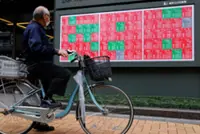In fiscal 2020 Japan's average job-to-applicant ratio posted the largest decline in 46 years.- KYODO
TOKYO, April 30 (The Japan Times/ANN): The decline in Japan’s average job availability ratio in fiscal 2020 was the largest in nearly half a century, with the unemployment rate up for the first time in 11 years, reflecting the serious impact of the COVID-19 pandemic, government data showed Friday.
The job-to-applicant ratio for the year ending in March dropped 0.45 point to 1.10, the sharpest decline since a 0.76 point drop in fiscal 1974 recorded following the 1973 global oil crisis, according to the Health, Labor and Welfare Ministry. The ratio means there were 110 job openings for every 100 job seekers.
Already a subscriber? Log in
Save 30% OFF The Star Digital Access
Cancel anytime. Ad-free. Unlimited access with perks.





